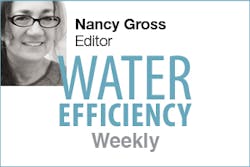Hand-in-Hand Combat Against a Toxic Urban Soup
The water quality in Baltimore’s inner harbor hasn’t been keeping pace with its renovated surroundings. Sewage, trash, and stormwater runoff have made it an unsafe place to swim or fish, according to The Waterfront Partnership of Baltimore, whose website says even simple contact with the water can be dangerous due to the threat of waterborne diseases. A Harbor Alert website, a project of Blue Water Baltimore, maps and measures the challenges. In June, The Baltimore Sun reported, “Baltimore harbor, watershed improving but still gets an ‘F’ for health.”
While the Waterfront Partnership sees an ecosystem in trouble, members and volunteers also see opportunity and are combatting pollution in a very grassroots manner. The goal is to make the water swimmable and fishable by 2020. A few of the Healthy Harbor initiatives are Mr. Trash Wheel, The Great Baltimore Oyster Partnership, and the Floating Wetlands. The visibility of these projects has the potential to inspire people to manage their urban environment differently, because, as they say, an ounce of prevention is worth a pound of cure.
About the trash wheel, which has removed 331 tons of garbage and debris since May 9, 2014:
The Inner Harbor Water Wheel, or “Mr. Trash Wheel” to locals, combines old and new technology to harness the power of water and sunlight to collect litter and debris flowing down the Jones Falls River.
The river’s current provides power to turn the water wheel, which lifts trash and debris from the water and deposits it into a dumpster barge. When there isn’t enough water current, a solar panel array provides additional power to keep the machine running. When the dumpster is full, it’s towed away by boat, and a new dumpster is put in place. Voilà! Thank you, Mr. Trash Wheel.
The reason for growing oysters in the harbor is to foster restoration, and not for eating. Maybe in the future harbor oysters can be safe the way that they once were when the city had over 100 oyster canneries, back in the 19th century. But for now:
In this program, baby oysters are grown at designated oyster garden locations in Baltimore’s Inner Harbor, October through June. After nine months, the matured oysters are taken by boat to a protected oyster sanctuary in the Patapsco River, where they will live out the rest of their lives.
Besides preserving Chesapeake Bay’s native oyster population, the goal of the Great Baltimore Oyster Partnership is to also train its volunteers to become “citizen scientists” who can speak to others about the water pollution challenges facing Baltimore Harbor, and the role that oysters play in improving water health.
We grow oysters because of their amazing ability to filter pollution out of the water. A full-grown oyster can filter up to 50 gallons of water every day! Two hundred years ago there were enough oysters to filter all of the water in the Chesapeake Bay every three days. Today it takes the remaining oysters over a year to filter the same amount of water.
And the grassroots efforts of the Waterfront Partnership even relies on grass roots, or plant roots, to do some of the work of harbor cleanup:
Because very few natural wetlands exist along Baltimore Harbor’s urban shorelines, our man-made Floating Wetlands were built to float in the water. Inside these buoyant islands are bundles of plastic bottles that have been collected from the harbor and up-cycled to help the wetlands float.
The Floating Wetlands are colonized by crabs, mussels, and eels, while waterfowl and fish use them for refuge.
At the end of each growing season, the Floating Wetlands are harvested and composted, turning them into useful fertilizer that can be used for landscaping around the Inner Harbor.
Made up of 2,000 square feet of islands that rest on the water’s surface, the Floating Wetlands were planted with native species that provide a habitat for marine life, and also help to clean the water.
Every time it rains, pollutants from lawns, roads, and other urban surfaces are swept into our streams and harbor. Fortunately, we’re able to battle this runoff with the Floating Wetlands, an efficient tool for cleaning polluted water. As the plants of the wetlands grow, they remove nutrient pollution and store it in their leaves while adding life-giving oxygen to the water. At the same time, their roots provide a home for microorganisms that feed on pollution.
The only element needed for all this to work? Simple sunlight.
https://www.youtube.com/embed/videoseries
Encouraged? Tell us about waterway cleanup projects in your state, city, or neighborhood.
